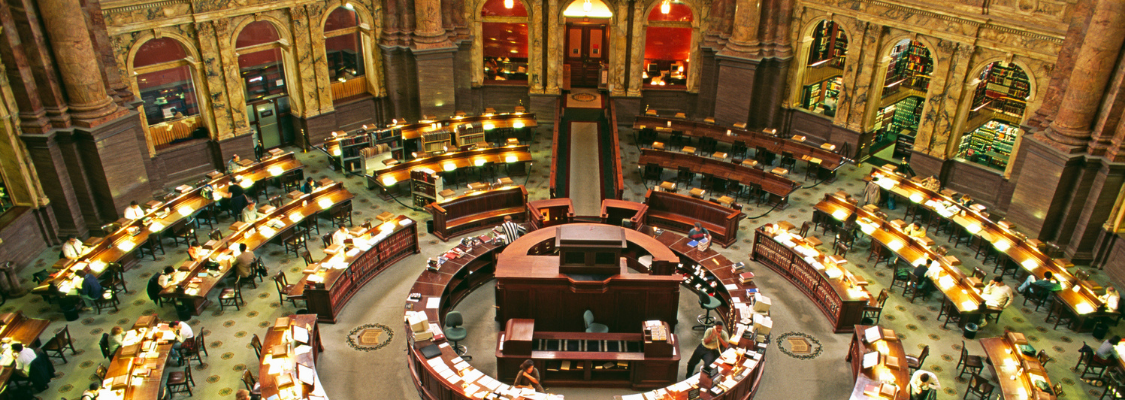Lesson 5: Electing Congress and the President (Grades 4-5)
Objective for the Lesson:
This lesson will examine how members of Congress and the president are elected and ask students to consider both the historical reasons for the electoral college and its modern implications.
Weekly Summary:
The method of choosing Representatives and Senators is set by the Constitution; the total number of Representatives was set in the Permanent Apportionment Act of 1929. The method of choosing the president is also set by the Constitution, but the method used, the electoral college, is often difficult for students and adults to understand.
This lesson will examine how members of Congress and the president are elected and ask students to consider both the historical reasons for the electoral college and its modern implications.
Background Knowledge for Teachers:
How the Electoral College Works
The Founding Fathers didn’t want a direct election for the president and vice president of the new United States. Much of the population at the time lived in rural areas. News and other information took time to get to the people if it got there at all. Much of the population also had no formal education. The creators of the Constitution felt voters in those early days of being a nation would not know enough about all the candidates to make wise decisions. There was also a consideration for how to make the elections fair in regards to large and small states. So, they included the electoral college in the Constitution.
This is how the electoral college works. Electors are chosen in the fall. Each political party chooses electors who are pledged to vote for particular candidates according to the popular vote and the rules of each state. Most states have all of their electors pledged to the candidate who wins the majority of the popular vote in their state. However, two states, Maine and Nebraska, allocate their electoral votes according to the actual popular votes for each candidate.
The national election for the President and Vice President of the United States takes place every four years on the first Tuesday after the first Monday in November. In mid-December, following the election, the electors in each state gather in their state capital and cast their electoral votes. The certified votes are sealed and sent to Congress.
On January 6, the electoral votes are officially opened in a joint session of Congress and counted. In order to win, a candidate must get at least 270 out of the 538 total electoral votes. If no candidate gets the required 270 votes, the House of Representatives will choose the president. They will vote for one of the candidates who received the most popular votes. When this happens, each state gets one vote. The representatives from each state have to decide together which candidate will get the state’s vote. This has only happened twice in U.S. history, in 1801 and 1825.
Student Expectations:
- Understand how members of the House of Representatives are apportioned and selected
- Explain how the election of senators changed with the 17th Amendment
- Understand why the electoral college was established by the Constitutional convention
- Describe how the electoral college works
Vocabulary:
composed: to make or form by combining things, parts, or elements
requisite: necessary for a particular purpose, position, etc.
apportionment: the determination of the number of members of the U.S. House of Representatives according to the proportion of the population of each state to the total population of the U.S.
electoral college: a body of electors chosen by the voters in each state to elect the president and vice president of the U.S.
Think Deeply: Students could have a formal debate about whether the electoral college process is fair for all voters. This could also be an argumentative essay prompt.
Lesson Plan:
- Review vocabulary words with the students and place the words/definitions on the word wall.
- Have students read the article “Electoral College” graphic organizer.
- Have a class discussion.
- Why did members of the Constitutional Convention set up this system?
- Read the excerpt from Federalist #68 to the class [Background: part of the Federalist Papers written by Hamilton, Madison, and Jay to defend the Constitution during ratification; Federalist 68 was written by Hamilton].
- Have students read “President and the Electoral College” as a class. Have them underline how members are chosen. Read “Amendment 12” together as a class.
- Have a class discussion about how the electoral college works.
- Have students look at the map of the electoral college and explain how each state gets the number of electors (Number of senators plus number of representatives).
- Have students create a diagram showing how the electoral college works.
- Have a class discussion.
- Why do students think that the members of the Constitutional Convention had state legislatures choose the Senators? [Possible answers: fear that someone unqualified might be elected; lack of education by voters; distrust of the common people]
- Why was the constitution amended to change this? [Possible answers: a more well-educated populace; voting restrictions had changed from 1789 to 1913; there were more people in the U.S. who wanted a voice in government]
Weekly Assessment:
- Have students write a paragraph on the following: Should the president be elected directly by the people? Why or why not?
